Art Fairs
How Nick Cave’s Soundsuits Made Him an Art World ‘Rock Star’
He is working on a massive installation for MASS MoCA.
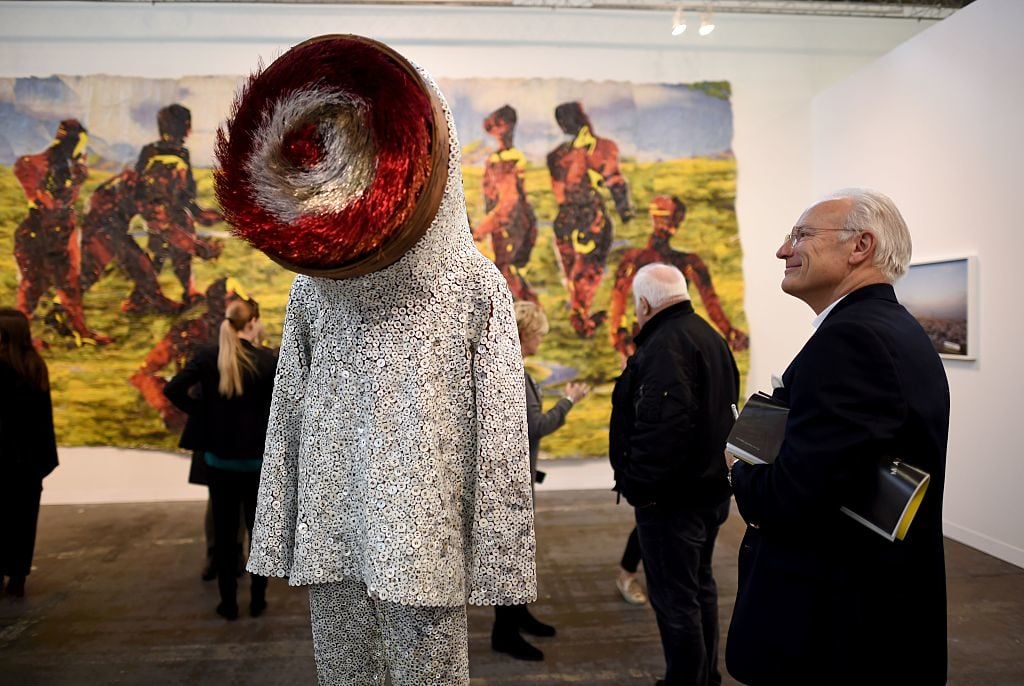
He is working on a massive installation for MASS MoCA.

Eileen Kinsella

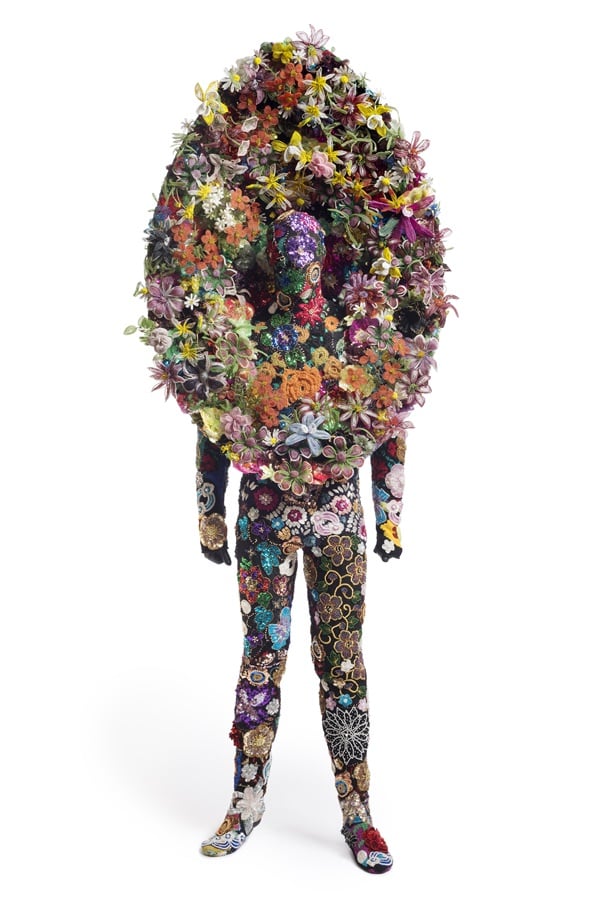
Nick Cave, Soundsuit (2015) ©Nick Cave. Photo by James Prinz Photography. Courtesy of the artist and Jack Shainman Gallery, New York.
Artist Nick Cave “is like a rock star in the art world,” said his primary dealer Jack Shainman, in a phone interview with artnet News. “When I see people starting to ask my artists for autograph, that changes into a different realm.”
Boosted by major museum shows, public performances, and substantial exposure at art fairs in recent years, Cave’s most famous works—his signature Soundsuits—have become wildly popular. And it’s not hard to see why. Though the styles, themes and materials vary widely, they all tend to be dazzlingly elaborate and fantastic sculptural forms based on the scale of the artist’s body.
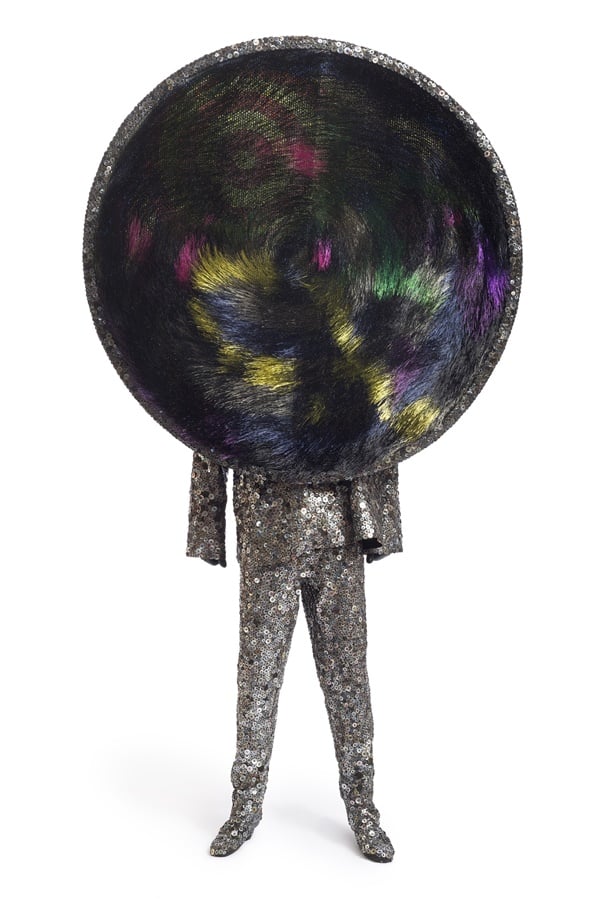
Nick Cave, Soundsuit (2016) ©Nick Cave. Photo by James Prinz Photography. Courtesy of the artist and Jack Shainman Gallery, New York.
The Soundsuits “camouflage the body, masking and creating a second skin that conceals race, gender, and class, forcing the viewer to look without judgment,” according to a description on Jack Shainman Gallery’s website.
Cave himself, and the many dancers he works with, often perform in the suits. His acclaimed show at the Cranbrook Museum of Art in Detroit this past fall, “Hear Here,” featured a city-wide program of performances and related events.
The artist is currently working on a massive installation for MASS MoCA titled “Until” that will open October 16. Shainman was hard-pressed to describe the details of the monumental project except to say he understands that it will be “immersive” and that the artist has described it as “being on the inside of a Soundsuit.”
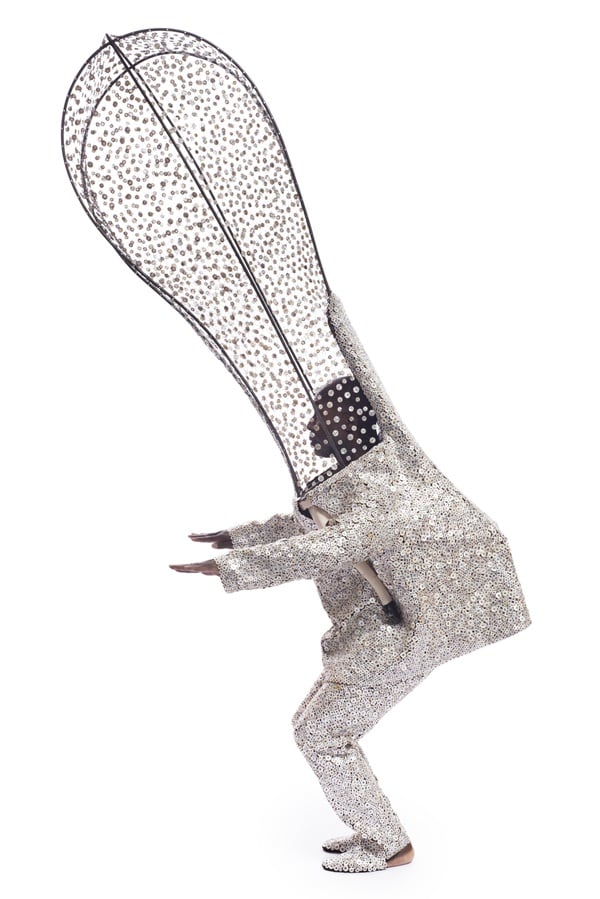
Nick Cave, Soundsuit (2012). © Nick Cave. Photo by James Prinz Photography. Courtesy of the artist and Jack Shainman Gallery, New York.
For the past two and a half decades—Cave created his first Soundsuit in 1992, as a response to the LAPD beating of Rodney King and the ensuing riots—interest in the Soundsuits has been building slowly and steadily, though it seems to have hit a tipping point of late.
“There is not a day that people aren’t calling about buying his work or museums interested in putting on shows,” says Shainman, adding, “I think it’s what’s called a ‘luxury problem’ but we’ve been having to turn down museum shows.”
Along with intense demand for Soundsuits on the primary market—the Seattle Museum of Art is among a recent buyer, said Shainman—some Soundsuits have been turning up at auction in recent years as well.
According to the artnet Price Database, there are just 16 results at auction for Cave. Nine of these works are Soundsuits.
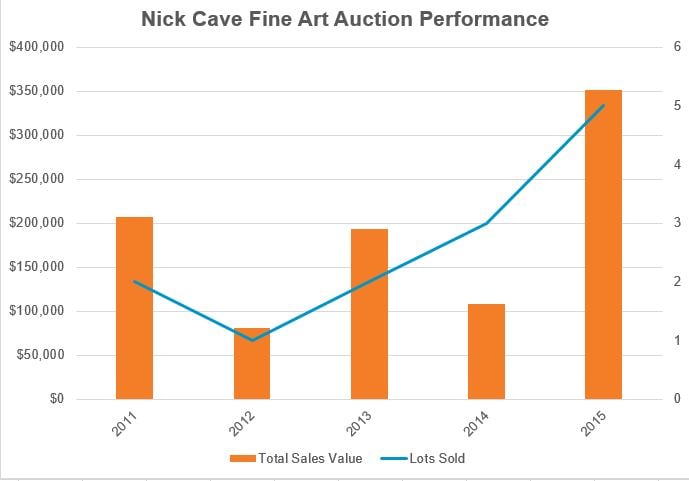
Source: artnet Analytics
The highest price to date was $150,000 for a 2008 Soundsuit that Sotheby’s offered in its contemporary day sale this past November (estimate: $80–100,000). Another example, from 2007, sold for $118,750, also at Sotheby’s, in November 2013, on an $80–120,000 estimate.

Charlie Moffett, a Sotheby’s associate vice president and head of the contemporary art day sale, remarked on their rising popularity. “In the last few years, as they come to market, more and more people are recognizing that not only are they incredibly beautiful sculptural works that have a performative history, but they are also an investigation into each of the stories for the impetus for their creation.” He noted one such Soundsuit in the Cranbrook show, TM13, was a tribute to Trayvon Martin.
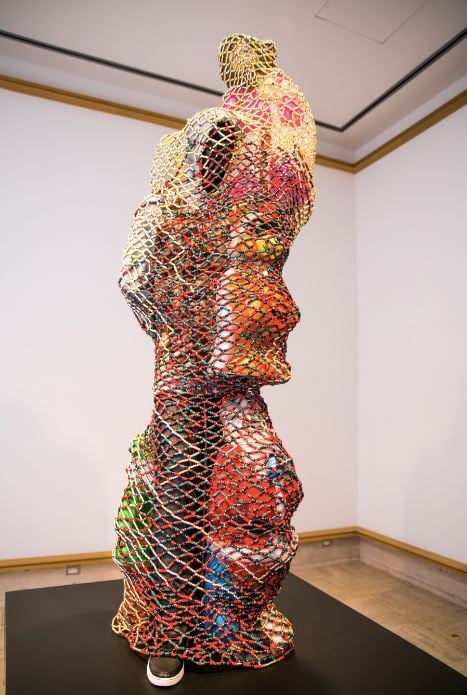
Nick Cave, TM 13 (2015).
Both Cave and Moffett affirmed that the appeal and demand for Soundsuits do not seem to be limited to a particular material or style (though Shainman notes: “People love the button Soundsuits” ).
And though Shainman says “we prefer them not to come to auction,” he says the prices achieved so far are generally in line with the primary market—if a tad higher—a trend that is undoubtedly reassuring to any dealer concerned about speculative activity.
Another sign of the broad appeal and depth of context of the suits is the inclusion of one in the Brooklyn Museum’s newly opened show “Disguise: Masks and Global African Art,” which runs from April 29 to September 18.
artnet News spoke with Kevin Dumouchelle, associate curator, arts of Africa and the Pacific Islands, at the Brooklyn Museum. Dumouchelle explained the changes that the Brooklyn Museum made to the show, which originated in Seattle, at the Seattle Art Museum including putting in the Cave Soundsuit from the museum’s own collection.
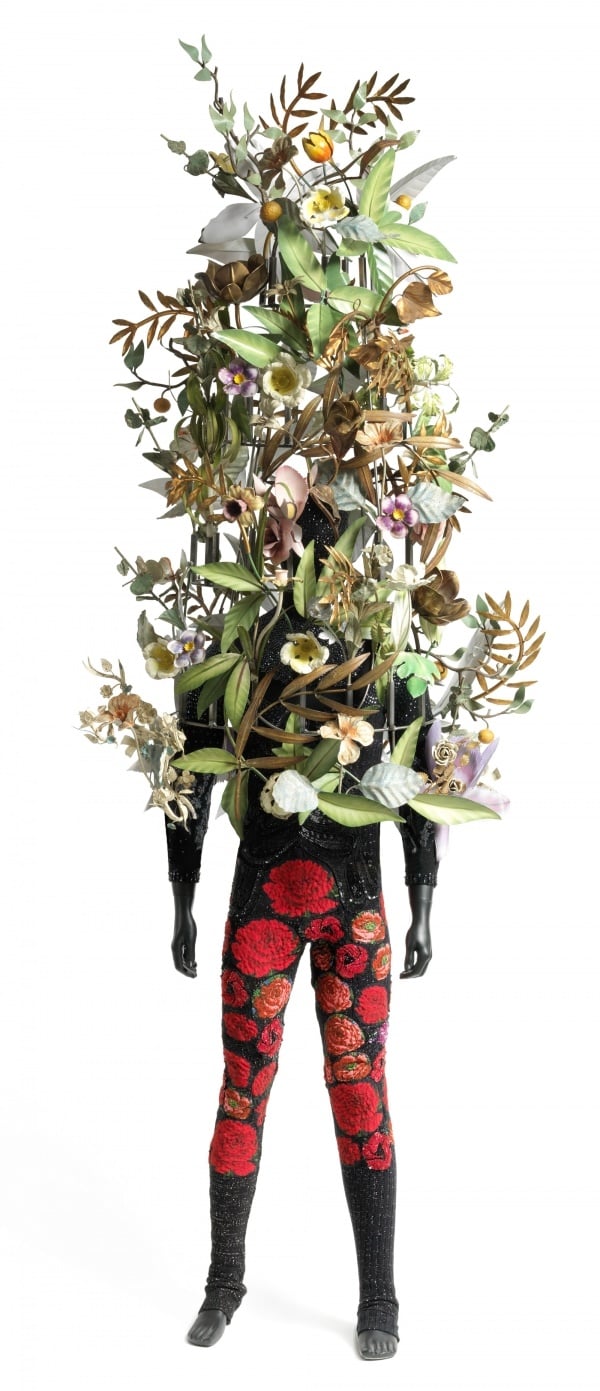
Nick Cave, Soundsuit (2000) Image: Courtesy of the Brooklyn Museum.
He explained: “The show explores the connection between historic African masquerade and contemporary artistic practice, including looking at artists who are rooting themselves in some way—either directly or indirectly—in ideas and practices that we can trace back to African masquerade,” said Dumouchelle. “Even just on the surface level, Nick Cave seems like an obvious candidate…”
As Cave busies himself with a major upcoming Mass MoCA installation, interest and demand for the Soundsuits keeps getting more intense. “I wouldn’t be surprised if we continue to see an increase in value for these works in the years ahead,” said Moffett.